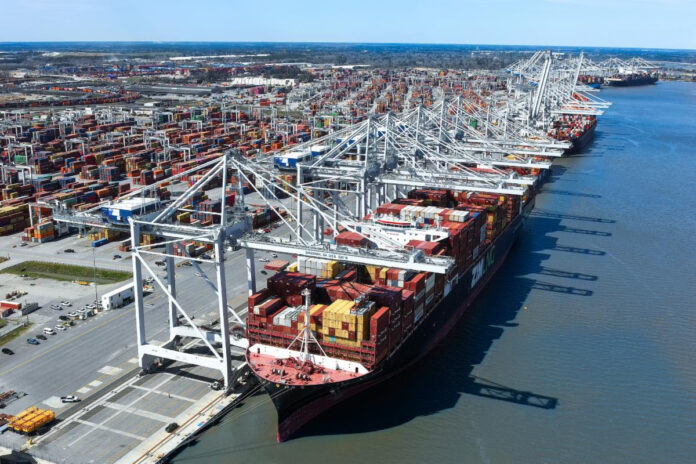
The Georgia Ports Authority (GPA) reported 479,850 TEUs in February, a 6% increase over the same period last year and a new monthly record.
Meanwhile, GPA’s intermodal team achieved a milestone on 28 February, completing 2,246 rail lifts within 24 hours.
The Port of Savannah’s Mason Mega Rail Terminal operates six trains daily, totaling 42 per week. The facility boasts an industry-leading dwell time of 19 to 24 hours between an import container being offloaded and departing via rail.
“This strong performance is a testament to the trust our customers place in the Port of Savannah as their gateway to the US Southeast,” stated Griff Lynch, CEO and President of GPA. “I would also like to congratulate the International Longshoremen’s Association and the US Maritime Alliance on signing a six-year contract in February, which will ensure labor stability and support the prosperity of our state and nation.”
Despite the surge in container traffic, operations remained smooth, with coordinated efforts from yard and gate teams ensuring efficient truck movement. Garden City Terminal also set a record for weekly truck gate moves, processing 78,950 transactions in the final week of February.
“We were able to accommodate the increased trade while maintaining excellent service for our motor carriers and customers,” commented Ed McCarthy, Chief Operating Officer at GPA. “Single container moves averaged only 35 minutes for truckers on terminal, while dual container moves averaged just 54 minutes.”
Notably, dual container moves—where drivers both deliver an export and pick up an import—accounted for 85% of Savannah’s container business, enhancing overall efficiency.
The momentum continued into March, with Garden City Terminal achieving a record 16,430 truck gate transactions in a single day on 11 March. To further improve operations, Gateway Terminals and the local ILA have introduced three additional vessel work start times at 6 a.m., 3 p.m., and 9 p.m.
The Port of Savannah, currently averaging 35 vessel calls per week, is set to expand capacity with a new lay berth at Ocean Terminal beginning in May. This addition will significantly reduce transition times between departing and arriving ships, cutting berth downtime at Garden City Terminal by up to 75%—from 12 hours to just 3 hours. As a result, the port will be able to handle approximately two extra ships per week, or 100 more vessels annually. A second lay berth is scheduled to become operational in mid-2026, further boosting capacity.
Meanwhile, in Roll-on/Roll-off trade, the Port of Brunswick moved 61,667 units of autos and heavy equipment in February, reflecting a 10% decline (6,882 fewer units) compared to the previous year. Colonel’s Island Terminal in Brunswick handled 42 vessel calls for the month, three fewer than in February 2024.





